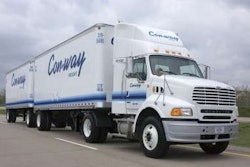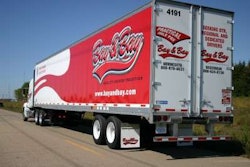The California Air Resources Board on Thursday, March 5, released a proposed regulation that would implement Gov. Arnold Schwarzenegger’s Low Carbon Fuel Standard, a policy to reduce the greenhouse gas emissions from California’s transportation fuels by 10 percent by 2020 and more thereafter. The release of the proposed regulation allows 45 days for the public to review the language and provide comment before the item is considered at the April 23 CARB hearing.
The proposed regulation would diversify the variety of fuels and boost the market for alternative-fuel vehicles. CARB says it is one of the most important early actions called for under AB 32, California’s climate change legislation, and will achieve 16 million metric tons of greenhouse gas emission reductions by 2020.
“The real strength of this standard is that it takes a comprehensive ‘cradle-to-grave’ approach that accounts for greenhouse gas emissions from production, transport and tailpipe emissions,” says CARB Chairman Mary Nichols. “The new standard will promote the development of alternative fuels that can provide economic opportunities, slash greenhouse gas emissions and reduce criteria pollutants and toxic air contaminants. It will help consumers by injecting competition into the transportation fuel market and set California on a course to benefit from technological innovation, energy diversification and economic development.”
Schwarzenegger issued the LCFS executive order in early 2007 directing the state to drive down greenhouse gas emissions from transportation fuels; the transportation sector alone accounts for 40 percent of the state’s total greenhouse gas emissions. The initiative is designed to increase the use of alternative fuels, replacing 20 percent of the fuel used by vehicles in California with clean alternative fuels by 2020, including electricity, biofuels, hydrogen and other options.
The proposed regulation requires providers, refiners, importers and blenders to ensure that the fuels they provide for the California market meet an average declining standard of “carbon-intensity.” This is determined by examining the sum of greenhouse gas emissions that are associated with the production, transportation and consumption of the fuel, also referred to as the “fuel pathway.” Market-based mechanisms will allow fuel suppliers to choose the most cost-effective clean fuels — those with the lowest carbon intensity — giving California consumers the widest variety of fuel options at a reasonable price.
While developing the regulation, CARB staff addressed the issue of how the production of some fuels impact land-related emissions. Certain fuel pathways result in the release of additional greenhouse gas emissions through the conversion of forestlands and other carbon-containing habitats worldwide. CARB staff is using internationally-accepted models to predict how land use change would occur due to increased demand and will include those emissions in the relevant fuel pathways.
To enhance private sector and federal investment into alternative fuel production and distribution, California is providing funding to assist in the early development and deployment of the most promising low-carbon fuels. The Alternative and Renewable Fuel and Vehicle Technology Program (AB118, Nunez, 2007), managed by the California Energy Commission, will provide about $120 million per year over seven years to deploy the cleanest fuels and vehicles.
AB 32, signed by Schwarzenegger in 2006, is California’s Global Warming Solutions Act that set in law aggressive greenhouse gas reduction targets (1990 levels by 2020). AB 32 set the goals, but the solution is prescribed in the Scoping Plan, which utilizes a mix of a cap-and-trade program, along with complementary measures. The LCFS is included in the Scoping Plan as one of the solutions for California to meet its AB 32 goals.
CARB will hold a public workshop the week of March 23 to accept public comment on the proposed regulation. The proposed LCFS regulations can be found at www.arb.ca.gov/regact/2009/lcfs09/lcfs09.htm.












